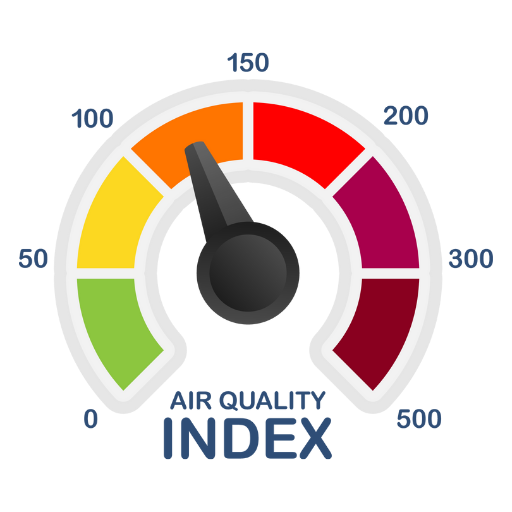As we go about our daily lives, we often take for granted the air we breathe. However, the quality of the air around us can have a significant impact on our health and well-being. Enter the Air Quality Index (AQI), a vital tool that provides valuable information about the air we breathe and its potential effects on our bodies. From bustling city streets to serene rural landscapes, understanding AQI is essential for individuals, communities, and policymakers alike.
Imagine this: You step outside on a crisp morning, taking in a deep breath of fresh air – but do you know what you’re inhaling? The AQI is like a window into the invisible world of air pollution, offering insights into pollutants such as ozone, particulate matter, carbon monoxide, sulfur dioxide, and nitrogen dioxide. Whether you’re concerned about your neighbourhood’s industrial emissions or simply curious about how smog affects your favourite outdoor activities, delving into the realm of AQI promises eye-opening discoveries that could change the way you view the atmosphere around you.
What is AQI: – Definition and purpose
– Factors contributing to AQI
The Air Quality Index (AQI) is a measure used to communicate the level of air pollution in a specific area to the public. It provides information about how clean or polluted the air is and what associated health effects might be of concern. The purpose of AQI is to help people make informed decisions about outdoor activities, particularly those with respiratory conditions or other health risks related to air pollution.
Several factors contribute to AQI, including the concentration of pollutants such as ozone, particulate matter, carbon monoxide, sulfur dioxide, and nitrogen dioxide in the air. Weather conditions like temperature, humidity, and wind speed also play a significant role in determining AQI levels. Human activities such as industrial emissions, vehicle exhaust, agricultural practices, and natural events like wildfires can further impact AQI scores. Overall, understanding these various contributing factors can provide insights into how different sources influence air quality and guide efforts to reduce pollution.
The complexity of determining AQI levels goes beyond simply measuring pollutant concentrations; it involves recognizing the intricate interaction between multiple contributing factors that collectively influence air quality in a given location. By gaining a deeper understanding of these elements, we can better appreciate the dynamic nature of air quality and take proactive steps toward improving it.
AQI Categories: – Breakdown of air quality levels
– Health implications for each category
The AQI categories provide a crucial breakdown of air quality levels, quantifying the presence of major air pollutants such as ground-level ozone, particulate matter, carbon monoxide, sulfur dioxide, and nitrogen dioxide. The Good category (0-50) indicates minimal health risks and encourages outdoor activities; however, the Moderate category (51-100) may pose a concern for sensitive individuals due to increased pollutants. Moving up the scale, the Unhealthy for Sensitive Groups category (101-150) could lead to respiratory issues for vulnerable populations like children and elderly individuals.
Entering into more severe territory is the Unhealthy category (151-200), which can cause health effects on a broader population range. This level reinforces the importance of reducing outdoor activities and limiting exposure to pollutants. Climbing further up the AQI ladder exposes us to Very Unhealthy (201-300) conditions with significant adverse health impacts even on healthy individuals. Lastly, hitting an AQI of 301 or above lands us in Hazardous territory where everyone may experience serious health effects. Understanding these categories helps people make informed decisions about exposure based on their surroundings’ air quality levels.
Measuring AQI: – Monitoring stations and methods
– Interpretation of AQI values
When it comes to measuring Air Quality Index (AQI), monitoring stations utilize various methods to assess the concentration of pollutants in the air. These methods can include satellite remote sensing, ground-based monitoring, and sensor networks. Each method provides unique data that contributes to a comprehensive understanding of air quality, allowing for more effective interventions and policies aimed at improving public health.
Interpreting AQI values is crucial for individuals and policymakers alike. Understanding the implications of AQI values allows for informed decision-making regarding outdoor activities, health precautions, and environmental regulations. Moreover, considering local factors such as geography, weather patterns, and industrial activity is essential for accurate interpretation of AQI values. This underscores the need for transparent reporting and communication of air quality data to ensure that stakeholders have access to reliable information that directly impacts their well-being.
As such, a multidisciplinary approach incorporating inputs from scientists, public health experts, urban planners, and community members is essential for interpreting AQI values in a way that addresses both scientific rigour and real-world implications. By fostering collaboration across diverse fields and engaging with local communities on the significance of AQI measurements – we can facilitate meaningful action towards achieving cleaner air for all.
Impacts on Health: – Respiratory and cardiovascular effects
– Vulnerable population groups
The impacts of air pollution on health are far-reaching, particularly in terms of respiratory and cardiovascular effects. Studies have shown that prolonged exposure to polluted air can lead to an increased risk of respiratory diseases such as asthma, chronic obstructive pulmonary disease (COPD), and even lung cancer. These pollutants can also penetrate deep into the lungs and enter the bloodstream, causing inflammation and damage to blood vessels which can ultimately lead to heart attacks, stroke, and other cardiovascular complications.
Vulnerable population groups such as children, the elderly, and individuals with pre-existing health conditions are particularly at risk from the adverse effects of air pollution. Children’s developing respiratory systems make them more susceptible to the damaging effects of pollutants, while the elderly may already have compromised lung function. Those with pre-existing conditions such as asthma or heart disease may experience exacerbated symptoms when exposed to polluted air. It is crucial for public health initiatives to prioritize these vulnerable populations in efforts to reduce air pollution and protect their well-being.
Environmental Effects: – Impact on ecosystems
– Contribution to climate change
The environmental effects of human activities have had a profound impact on ecosystems around the world. Deforestation, pollution, and over-harvesting have disrupted delicate ecological balances, leading to the decline and extinction of numerous plant and animal species. These disruptions can have far-reaching consequences, such as the loss of biodiversity and destabilization of food webs. Additionally, the alteration or destruction of habitats can force species to migrate or adapt to new environments, often resulting in increased competition for resources and heightened vulnerability to predation.
In addition to its impact on ecosystems, human activity has also significantly contributed to climate change. The burning of fossil fuels and deforestation releases large amounts of greenhouse gases into the atmosphere, trapping heat and leading to global warming. This temperature rise has led to more frequent extreme weather events, glacial melting, rising sea levels, and shifts in temperature patterns that affect plant growth and animal behaviour. The resulting climate changes pose significant challenges for both terrestrial and aquatic ecosystems, threatening their stability and resilience.
The interconnectedness between environmental effects on ecosystems and contributions to climate change is undeniable. It underscores the urgent need for collective action toward sustainable practices that mitigate further damage while rehabilitating damaged ecosystems. By recognizing the multifaceted nature of these issues—such as conserving natural habitats while reducing carbon emissions—and prioritizing responsible stewardship of our planet’s resources, we offer hope for restoring balance to our environment for future generations.
Improving Air Quality: – Individual and community actions
– Government regulations and policies
Individual and community actions play a pivotal role in improving air quality. By adopting sustainable transportation methods such as cycling or carpooling, individuals can reduce the emission of harmful chemicals into the atmosphere. Additionally, community clean-up efforts can eliminate sources of pollution and create a healthier environment for all. Engaging in tree-planting initiatives can also contribute to the purification of air by absorbing carbon dioxide.
Government regulations and policies are instrumental in addressing air quality concerns on a larger scale. Implementing stringent emission standards for industries and vehicles can significantly mitigate air pollution. Furthermore, investing in renewable energy sources such as solar and wind power can help reduce reliance on fossil fuels, consequently leading to cleaner air. Strengthening monitoring systems and enforcing penalties for non-compliance with environmental regulations is essential to ensuring sustained progress toward improved air quality.
Conclusion: Understanding, monitoring, and improving air quality.
In conclusion, understanding, monitoring, and improving air quality is an ongoing challenge that requires the collective effort of individuals, communities, businesses, and governments. It is important to recognize the interconnectedness of various factors such as industrial emissions, vehicle exhaust, and natural phenomena in contributing to air pollution. By embracing advanced technologies like air quality sensors and data analytics, we can gain a more comprehensive understanding of air pollution hotspots and take targeted actions to address them.
Furthermore, public awareness and education play a crucial role in promoting sustainable practices and reducing pollution levels. Collaborative initiatives such as tree-planting campaigns, clean energy advocacy, and local environmental regulations are instrumental in driving positive changes. As we continue to navigate the complexities of urbanization and industrialization, it is essential to prioritize policies that promote clean energy sources and environmentally conscious behaviours. Ultimately, by fostering a deep understanding of the impact of air quality on human health and environmental sustainability, we can work towards creating cleaner and healthier living environments for future generations.



